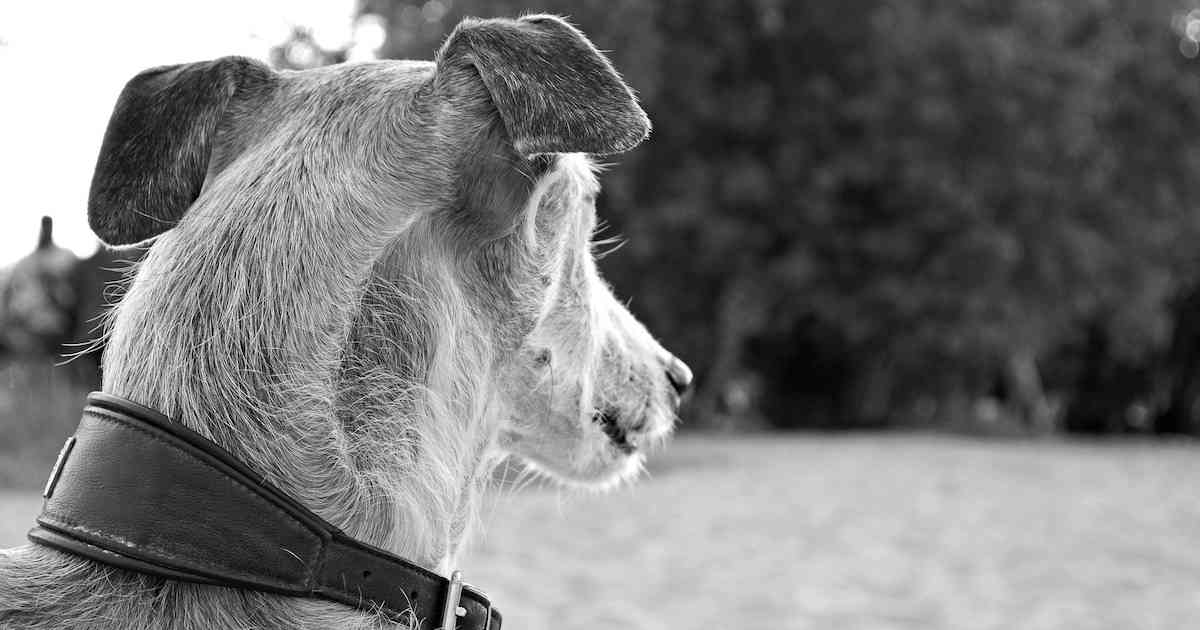Updated April 13, 2021
The owner of a limping Greyhound surprised me recently by asking about bone cancer. She had heard it was quite common in the breed.
At the time, I did not think that the data showed an increased risk, and said so. How wrong I was. But first, here is a quick refresher of the problem.
What Is Bone Cancer?
Bone cancer generally refers to osteosarcoma. It’s a highly aggressive and malignant tumour arising from the cells that make up bone.
The essential facts about osteosarcoma in dogs are:
- It generally starts in a leg bone
- It causes severe limping
- It is usually incurable
I’ve written a longer article about the diagnosis and treatment of osteosarcoma that you can find at the link. This article is about how it affects Greyhounds.
Differences In Greyhounds
We now know that Greyhounds have a high risk of osteosarcoma. So why is it that older studies don’t show this? The answer is probably because this breed’s diseases weren’t being noticed.
Greyhound adoption has only taken off in the past 20 years. Therefore, any study that uses data from before this time will miss many of their everyday diseases. It’s a common problem in science: how representative is the population being sampled?
But the increased awareness creates a new problem, that I’m starting to see. Greyhounds very frequently have all sorts of leg problems, presumably due to their racing past. The knowledge that they get bone cancer is causing a lot of worry in their owners.
Nearly all of the time, a limping Greyhound has something a lot less serious.
What Percentage Of Greyhounds Get Osteosarcoma?
Two studies have compared the incidence of osteosarcoma in Greyhounds to other breeds. Here’s what they found:
- 5.1% of 744 dogs with osteosarcoma were Greyhounds1
- 11.7% of 179 dogs with osteosarcoma were Greyhounds2
These studies show that osteosarcoma is common compared with other breeds, but not how likely an individual dog is to get it. In order to know the percentage of Greyhounds that get bone cancer, we need to compare this to all causes of death. So far, the one study to have done it found a shockingly high number.
25% of 113 deaths recorded over a 2 year period were due to osteosarcoma3
This may be true, but I’m skeptical.
Does Osteosarcoma Really Kill One In Four?
There are two reasons why I think this study is not giving a true picture of the population.
First, it doesn’t agree with my observations. I have known 71 Greyhounds, and seen osteosarcoma in only two of them. While we should always prioritise data over personal anecdote, the difference between the two shouldn’t be this large.
A more evidence-based argument comes from a study of 400,000 insured Swedish dogs4 They looked at the risk of osteosarcoma in different breeds and for each calculated a rate per 10,000 Dog Years At Risk. Although trying to understand DYAR makes my head hurt, it gives us a way to compare dog breeds.
Here’s what they found. According to this, a Greyhound is five times more likely to get bone cancer than an average dog. This still seems high, but it’s probably close to the truth, and on a par with other at-risk breeds.
| Breed | Rate of Bone Cancer |
|---|---|
| Irish wolfhound | 99 |
| St. Bernard | 78 |
| Leonberger | 53 |
| Great Dane | 45 |
| Rottweiler | 36 |
| Flat-coated retriever | 35 |
| Greyhound | 30 |
| Hovawart | 28 |
| Bernese mountain dog | 26 |
| Doberman | 24 |
| Newfoundland | 22 |
| Boxer | 13 |
| Standard schnauzer | 9 |
| Irish setter | 8 |
| Golden retriever | 6 |
The average across all dogs, by the way was 5.5 cases per 10 000 dog-years-at-risk. So in this study, a Golden retriever has about the same risk as other dogs.
My Greyhound Has Leg Problems. What Now?
Simply, don’t panic. See a vet for sure, but don’t lose any sleep in the meantime. Bone cancer is especially unlikely if you can’t see any lumps or swellings.
99 times out of 100, that limp is going to be caused by something else. Something a whole lot easier to manage.
Have something to add? Comments (if open) will appear within 24 hours.
By Andrew Spanner BVSc(Hons) MVetStud, a vet in Adelaide, Australia. Meet his team here.
References
- Tuohy, J. L., Shaevitz, M. H., Garrett, L. D., Ruple, A., & Selmic, L. E. (2019). Demographic characteristics, site and phylogenetic distribution of dogs with appendicular osteosarcoma: 744 dogs (2000-2015). Plos one, 14(12), e0223243
- Rosenberger, J. A., Pablo, N. V., & Crawford, P. C. (2007). Prevalence of and intrinsic risk factors for appendicular osteosarcoma in dogs: 179 cases (1996–2005). Journal of the American Veterinary Medical Association, 231(7), 1076-1080
- Lord, L. K., Yaissle, J. E., Marin, L., & Couto, C. G. (2007). Results of a web‐based health survey of retired racing Greyhounds. Journal of veterinary internal medicine, 21(6), 1243-1250
- Egenvall, A., Nødtvedt, A., & von Euler, H. (2007). Bone tumors in a population of 400 000 insured Swedish dogs up to 10 y of age: incidence and survival. Canadian Journal of Veterinary Research, 71(4), 292


We’re in NZ and have had three re-homed greyhounds. The first girl made it to 11 before we discovered this cancer. It was far too late when we realised. The 2nd boy died of an unrelated mystery illness that resulted in organ failure within a few days of appearing ill. He was only 4 years old. The third one also male has just been diagnosed with the same cancer in the same front left shoulder as the first. We were much faster to act and get it x-rayed but still there is nothing we can do except pain killers. He is 9 and originally from Victoria.
I have had 5 rescue greyhounds. 3 had osteosarcoma. Two of these dogs came from a racing greyhound who had it. This greyhound’s sperm was used to father many litters over several years. You should research not only within the breed but compare racing dogs to kennel club dogs. You will find less instance in kennel club dogs. Racing owners don’t look for longevity. This causes not only heartache for the people who car for ex racers but cost thousands in vet bills for a cancer which, with careful breeding, could be decreased.
Hi Alyson. I’m sorry to hear about your dogs. What you say is correct but kennel club Greyhounds are so rare here that I have yet to see one. Additionally, most or all of the Greyhound owners I know here in Adelaide acquired their dogs in order to rescue them after their racing career was over.
Thanks Andrew. I agree, they are rare. I am in Sydney and have seen them at the easter show. I am currently nursing my boy with this awful disease.
Thanks again
I have had 10 Greyhounds.
3 have had Osterosarcoma-2 had it the front shoulder & 1 in rear lower leg
1 had Lymphoma
The two with Osteosarcoma & one with Lymphoma were all related through the father’s line.
I’ve just lost my second greyhound lurcher to Osteosarcoma. Both dogs were male, black and were the same age when diagnosed, almost 7. They had the tumour in the same leg, front left. I asked my vet if I was doing something wrong, and she replied that I was just “incredibly unlucky”. My first lurcher was 2 weeks from diagnosis to being pts in 2015. My second boy has been on palliative care since June 2021. I did not want to be in the position of my dogs having a spontaneous fracture, so took the hard decision to pts.